Alicante
Memory is such a strange tool
I had never really been to Spain before arriving in Alicante. Of course, more than twenty years ago, I had spent a really eventful weekend in Barcelona, culminating in a robbery involving the friend I was travelling with. Memory works in mysterious ways: I remember nothing of that weekend, except the agitation of the policewoman who had taken my travelling companion’s complaint, the police station, its damp walls. And then, yes, in a working life which feels impossible if compared to the one I am currently experiencing, I had spent an afternoon and a night in Madrid: of the capital, I remember even less. In fact, I remember nothing at all. On certain journeys, one forgets everything, and perhaps it really is for the best, if the stage is just yet another hotel, yet another meeting room.
So, Alicante was my first real time in Spain. I arrived there at midnight, with a smooth flight and a plane full of people. At the ‘arrivals’, the pleasant heat of mid-May and an endless queue of people waiting for a taxi. A few Italians here and there. A few Scandinavians. Actually, they are almost all British or Russian. People are fleeing from wars, but they are also fleeing from the everyday choices made for many of them by their rulers.
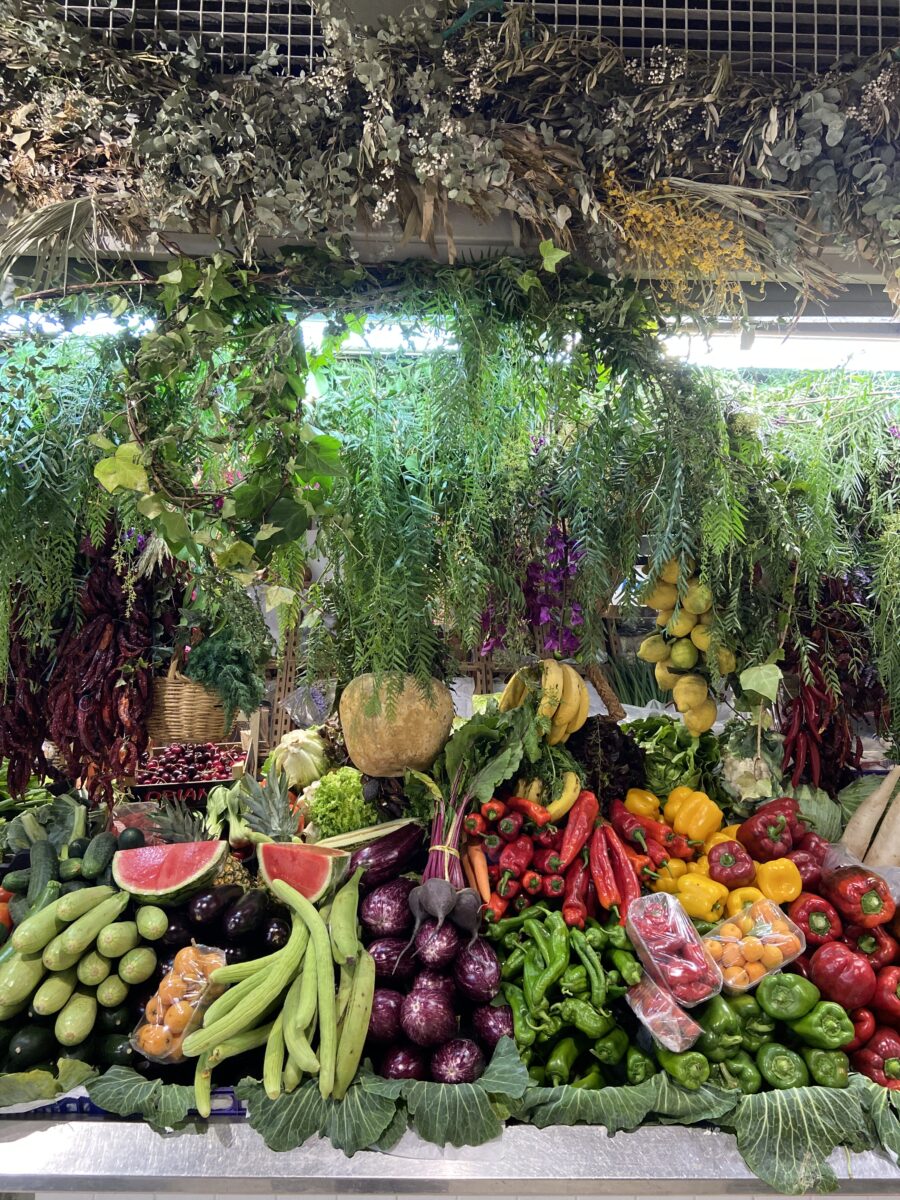 25 May 1938
25 May 1938
On my first morning in Alicante, I sit down for breakfast in a random café, the first one I find amidst the huge buildings that seem to strangle the city centre. In my non-existent Spanish, I ask the owner what they eat here in the morning: my question gets answered by a lady who must speak impossible languages, and she tells me that in Alicante breakfast is mostly tostada con tomate.
As I wait, as usual, I watch as people come and go in the rain, people from the same neighbourhood who know each other, exchange a few silly words and laugh, and the ever-present Brits looking for a greater sense of freedom, perhaps, away from a Brexit that is impossible to think about and support. Or perhaps just looking for life by the sea.
From the little bar, I go to the Mercado Central. In front of one of the various entrances, there is an inscription on the ground: it commemorates the victims of an aerial bombing inflicted by the Italian fascists on 25 May 1938: on this date, during the Spanish Civil War, the Italian fascist air force dropped 90 bombs on the city. Of these, those falling on the Mercado Central killed 300 civilian victims. Of this episode, of course, I had never heard of before arriving here: telling me the details is a clock – kept in a display case in a side section of the market – that stopped working at 11.19 a.m. on that very date. This object – as often happens in conflicts – thus becomes a mute and silent testimony to the slaughter, stupidity, and wickedness of humanity. Giving me further details of this unknown piece of history is a large siren – also kept in the same part of the market: until the beginning of the Spanish Civil War, it warned civilians of approaching air attacks. Unfortunately, on 25 May 1938, it was unable to detect the position of the Italian fascist air force, which was already over the city, so the siren only sounded for the last time when the first bombs fell.
The Mercado Central is now alive, clean, colourful, and very tidy. The stalls, inside, are divided by food area: fish, seafood, and shellfish; eggs; meat and cold cuts; vegetables and fruit. It is a pleasure to wander around in the midst of all this abundance, in this huge living picture: lives that intersect and everyday life, shopping, enjoying small actions, while here roughly a hundred years ago bombs were falling and there was only fear. Todo cambia.
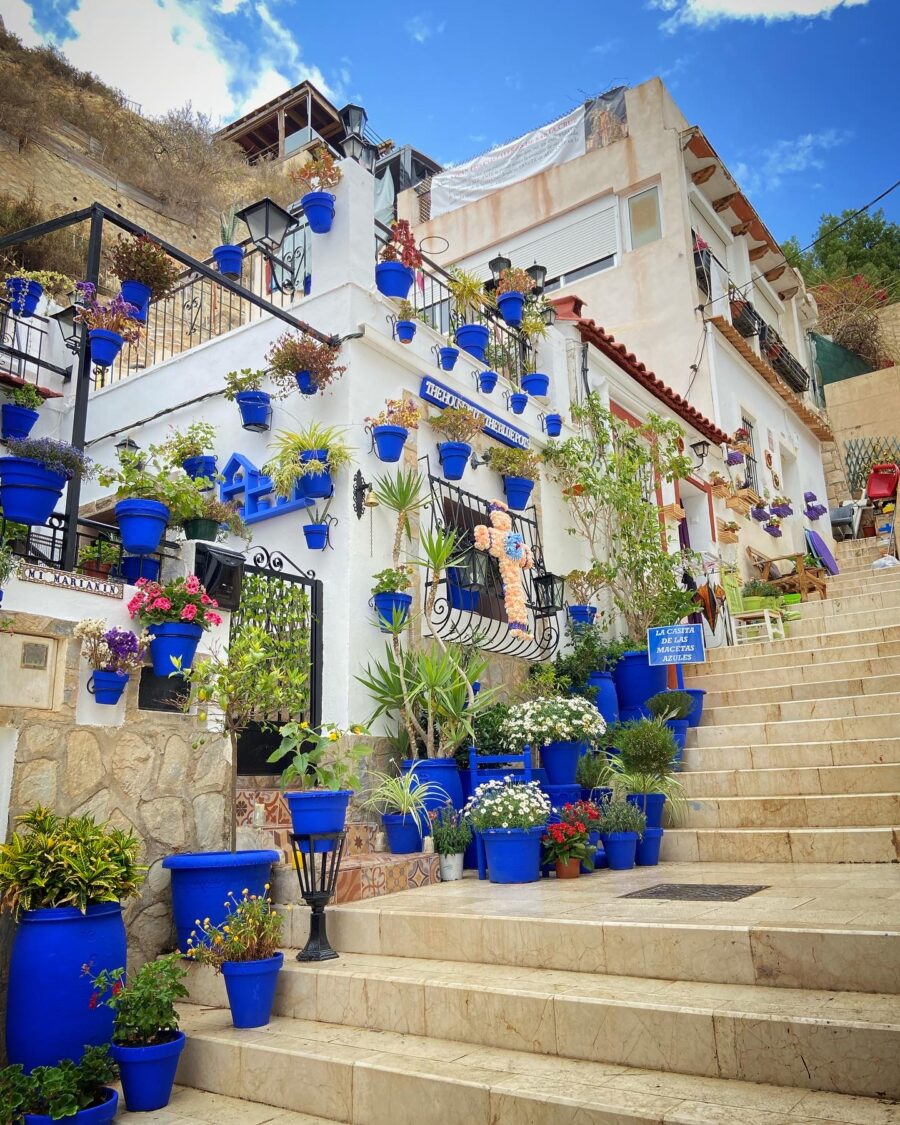
Barrio de Santa Cruz
The Barrio de Santa Cruz sits intertwined right under the Santa Barbara Rock, the old Moorish fortress later occupied by the Christian Spanish and converted into a Catholic castle.
There are no travellers when I arrive there in the late afternoon: it is raining and they are all sheltered, but the air is warm and reminds me of a summer that does not want to arrive here either.
The calles are small and narrow, one has been dedicated to Dean Martin, an unsociable black cat runs away, while another – a bit mangy – sleeps in front of an open window. Each house has various colourful elements that create a mixture of many: Christians, of course, crosses everywhere, but also Arabic, almost gipsy ingredients.
It seems to me that from up here we go back a long way, both in time and in the history of this Europe in which we come and go, in front of this Mediterranean that inexorably unites and divides us. Blue vases of flowers, chairs, and tables of the same shade. Some houses bear the names of the owners on their entrances: la casita de Nerea y Roman; Elsa, Yanira, Angel, Moises Jr. Some – a few – speak of faraway places (Bornholm). I wonder, then, if contamination has not arrived here too, perhaps erasing the true nature of this place. But then: what is the true nature of a place where everything passes like the Barrio de Santa Cruz, if not the continuous Becoming?
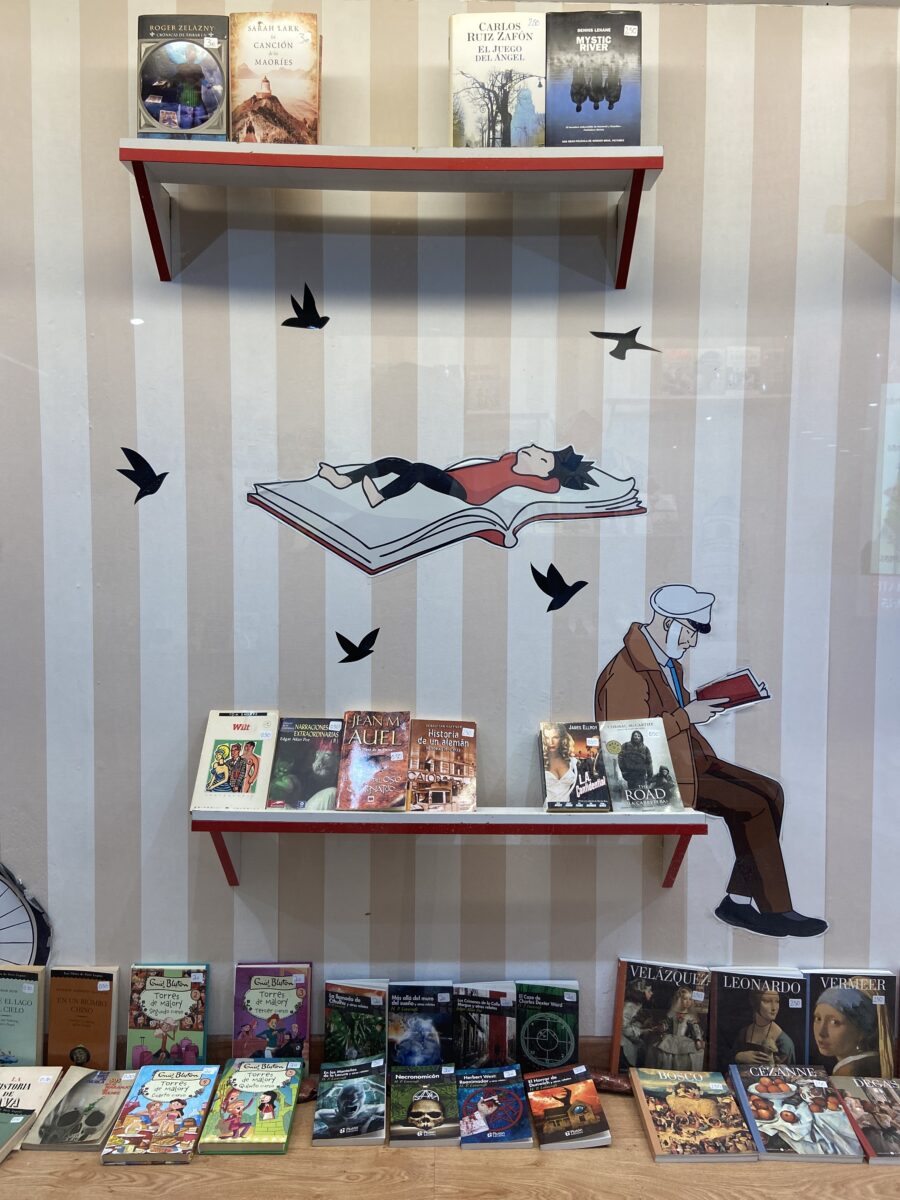
Circulate love and save trees
In a world of low-cost airlines, Libreria Terraferma (Carrer Calderón de la Barca, 21) is a low-cost bookshop. The ambience is modest and simple, but effective: used books are bought and sold here. This is nothing new, of course, in many cities around the world, there are similar solutions.
But at Terraferma, I spend a few minutes talking to the guy behind the counter: he tells me that they see this shop as a pragmatic way to save the planet, not necessarily create new objects (in this case, books).
To circulate love, even.
I do not think the profits are stellar, but ventures like these do not put profit at the top of their agendas. Adventures such as Terraferma are there to circulate good deeds, to allow (perhaps) everyone to read, and to save a few trees.
And among the latter, I meet a couple of incredible exemplars a few minutes later, in Ramblas de Méndez Núñez, 7: here, there are two specimens of Ficus macrophylla, evergreens – of Australian origin – that can reach up to 50 metres in height. Their roots are aerial columns that support the branches when they reach the ground. They are true living sculptures, which blend in exceptionally well with the immense and hideous buildings that disfigure much of the centre of Alicante.
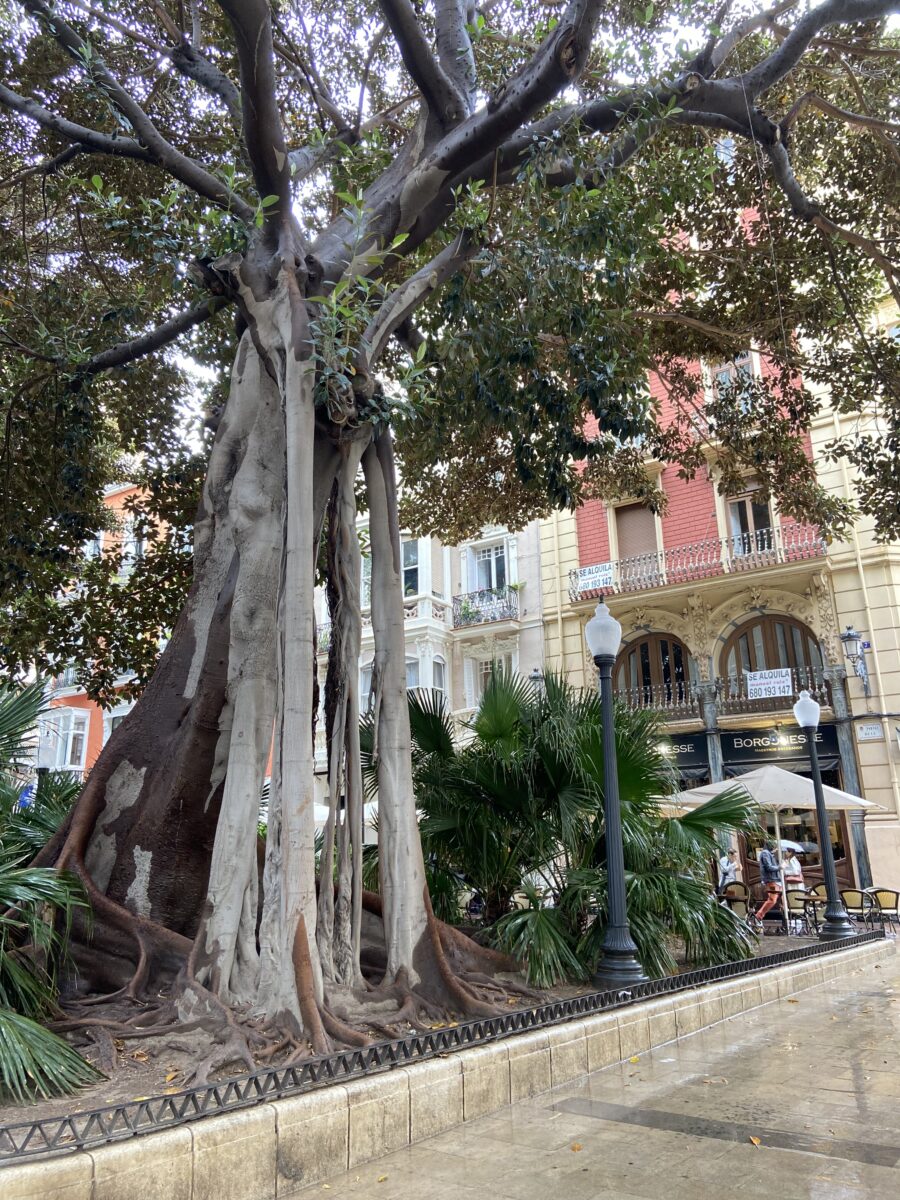
Elche, the largest palm grove in Europe
Ficus Macrophylla are not the only incredible trees I encounter on my first real trip to Spain. In Elche, in fact, there is the largest palm grove in Europe. I get there by train, a tiny, on-time train, in forty minutes (round-trip ticket 5.90€ – May 2023) from Alicante station: entry and exit for public transport are only possible by validating the ticket. And there, again, the merciless comparison with Italy, where the transport system is not necessarily always so well organised, arises inexorably.
The Palmeral de Elche was declared a Unesco World Heritage Site in 2000 and is home to hundreds of thousands of palm trees cultivated since Carthaginian times and irrigated by a series of brackish canals. They are centuries-old plants, the palms, and only the female specimens (called hembras) produce the sweet, succulent dates.
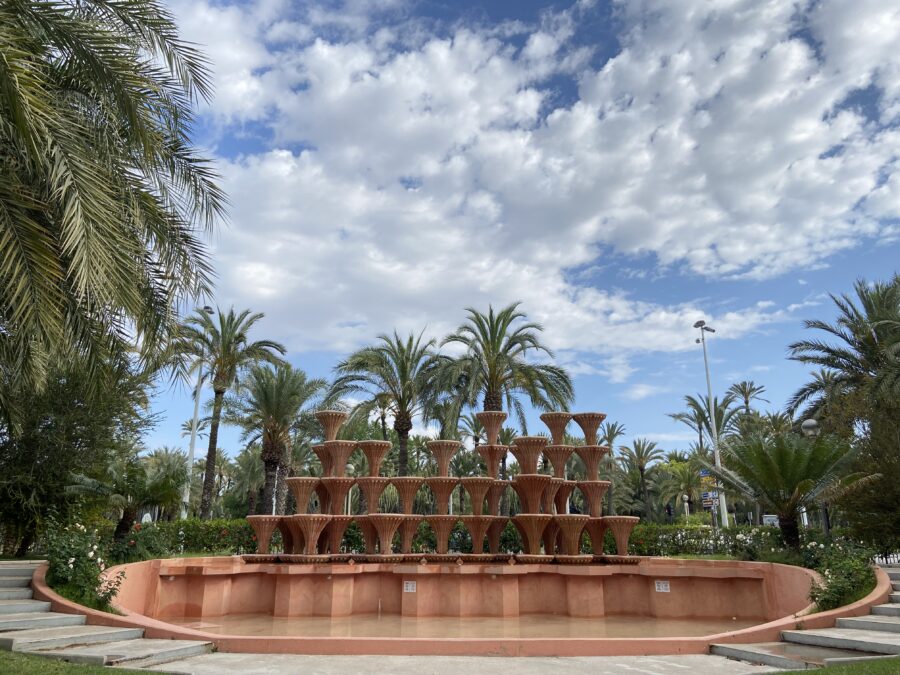
The first area where I meet these strong giants is at the Parque Comunal, a few steps from the train station: I get the impression already from here that the residents joyfully live a kind of symbiosis with this immense cultivation, which from afar looks like an extensive natural forest. The feeling of shared territory between humans and trees is reinforced at the Huerto del Cura (it means Park of the Priest): the entrance, which costs 6€, also gives access to an app that provides the traveller with an audio guide that takes me through the various parts of this private botanical garden.
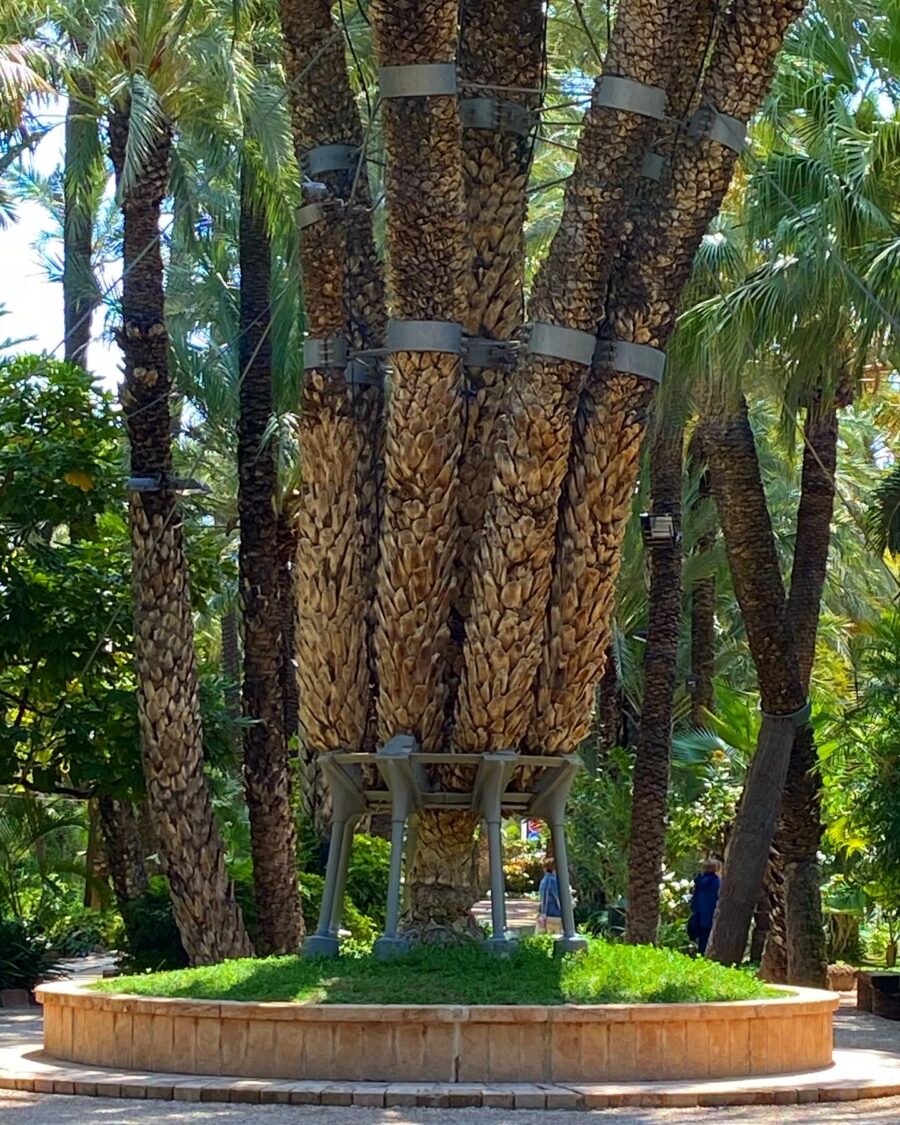
I immediately realise that I knew nothing about these plants before arriving here. There are many species, and many forms that these trees can take, but the most important one in the Huerto is the Palma Imperial: its name was dedicated by Chaplain Castaño Sánchez – the owner of the garden until 1918 – to Princess Sissi, who arrived in this part of Spain in 1894. This specimen is a male and has just turned 180 years old, an age that only represents the full maturity of these plants. I sit in the shade in front of the Palma Imperial while a group of French visitors take absurd selfies under its foliage: looking at it, it really seems to defy the laws of biology with its almost perfect symmetry. Normally, palm shoots develop at the base of the tree around the first 10-15 years of the tree’s life, whereas here they only grew more than two metres above the ground when the palm was 30 years old, creating an image similar to an immense 8-tonne candelabra. To such an anomalous specimen they could not fail to dedicate an exhibition located at the end of the Huerto in which – by means of photographs taken at various times – its development is traced, to say the least, incredible.
Leaving the botanical garden, I spend a few hours in the historic centre of Elche: I stroll around enjoying the sun at last, while Emilia Romagna a few hours’ flight from here dies under torrential rain nobody has ever seen before. The streets of the old town have a mixed past, rich, Muslim and then very Catholic. In the Basilica of Santa Maria, with its cobalt-blue roof, I attend a funeral (of a senior local police officer) and a wedding (Alba and Niall, Spain and Ireland at the altar) in the space of a few hours.
I also visit the Museum dedicated to the Mystery of Elche: between 14 and 15 August each year, a musical performance is staged here in the Valencian language (and therefore not in Latin) dedicated to the Dormition and Assumption of the Virgin Mary. Dating back to the 12th century, the story told in the Mystery celebrations is based on the Apocryphal Gospels, which were very popular in the Middle Ages, and is also considered by Unesco as an Intangible Cultural Heritage of Humanity.
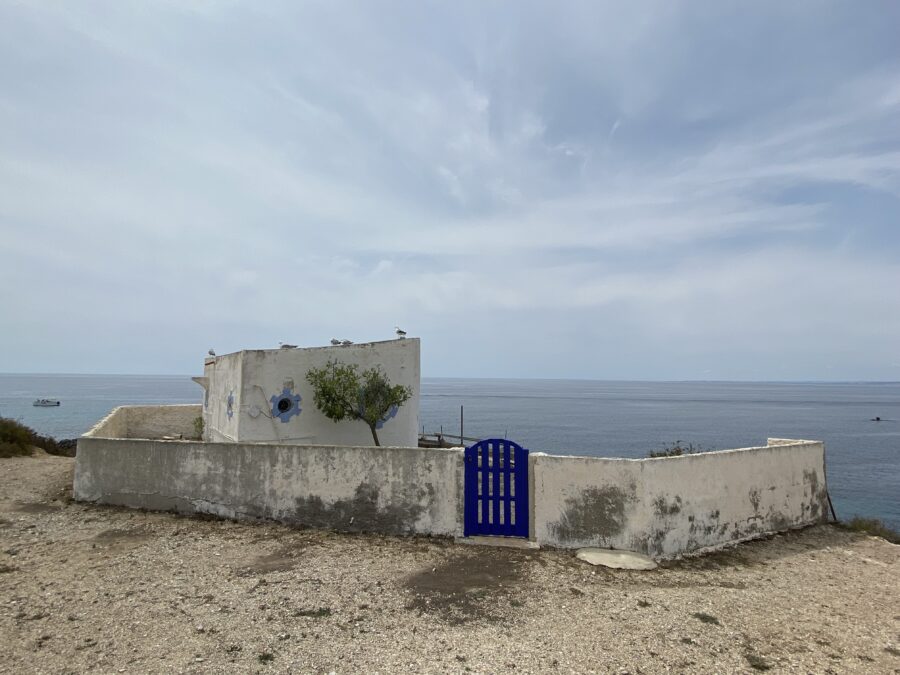
The Island of Tabarca: we all look for Another Life
The ferry leaves at 10.45 a.m. (tickets can only be booked online – cost €22 return – May 2023), but at 8 a.m. I am already at the port: once again that phenomenon has occurred whereby the further away I am from home, the less I sleep because there is no time to sleep on the road because life runs fast on the road.
I take a walk on the beach of El Postiguet, long and sparse with people at this hour: the only other humans I meet are either simply walking alone, or doing yoga – I recognise the asana – or, in one case, dancing. No one seems to be Spanish, and everyone seems to be there to seek a freedom perhaps never explored before, to doggedly lower their self-awareness, elsewhere.
The ferry leaves on time. The coastline that accompanies me for most of the crossing (duration: 1 hour) is ravaged by dystopian apartment blocks that disturb the calm of the blue waters of the sea. The island of Tabarca is very old: it has been a refuge for Berber pirates, but also for Genoese fishermen families imprisoned in Tabarka, who, fleeing the Tunisian city from which it takes its name, were shipwrecked here in the 17th century during the reign of Charles III.
Tabarca became Spain’s first marine and bird sanctuary in 1986. But Tabarca seems like a vision: as soon as I get off the ferry, I walk towards the lighthouse and the Genoese tower that I had seen from the sea and – one step after the other – I leave behind me the noise of the few travellers I had met just a few minutes before. About 3 kilometres long and 400 metres wide, in this wildest part (El Campo) I come across rocky coves and shrubs and small islets that make up the archipelago: la Cantera, la Galera, Nao and others whose names I am not going to write down because they don’t have one.
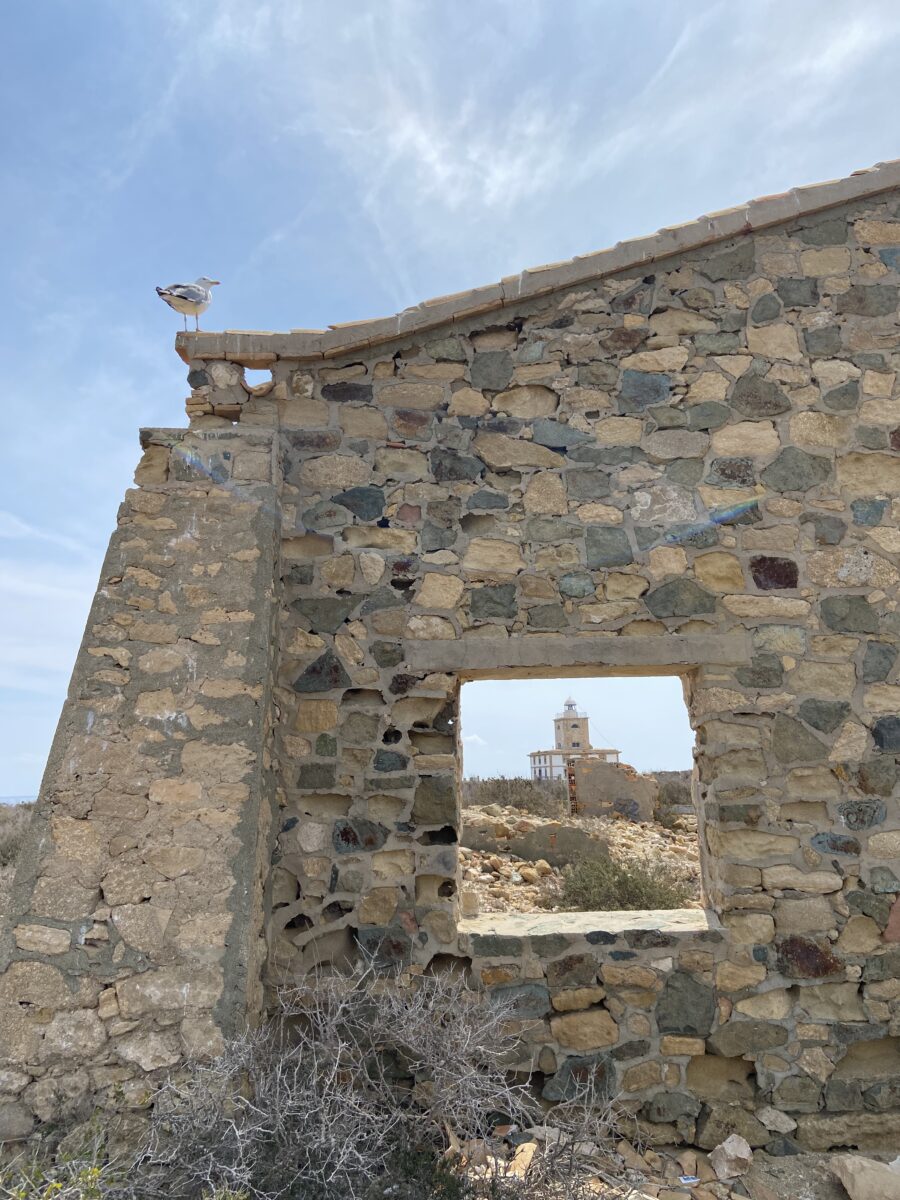 About 60 residents live in the centre of the island: they may not realise it, because we all tend to take everyday beauty for granted, but they live in a postcard. Very white houses, a bit ruined by the wind, rough, with blue and yellow doors, and cats sleeping crumpled here and there, and fighting with seagulls. A small group of chubby friends chat in front of a door: they seem to be deciding what colour to make it. If they had asked me, I would have suggested they paint it red, because it is a colour that is missing on Tabarca.
About 60 residents live in the centre of the island: they may not realise it, because we all tend to take everyday beauty for granted, but they live in a postcard. Very white houses, a bit ruined by the wind, rough, with blue and yellow doors, and cats sleeping crumpled here and there, and fighting with seagulls. A small group of chubby friends chat in front of a door: they seem to be deciding what colour to make it. If they had asked me, I would have suggested they paint it red, because it is a colour that is missing on Tabarca.
Around lunchtime, I sit in a small bar: I eat cold tomato meatballs, and olives, and I drink coffee while writing these last lines, sitting on an old plastic bar table, like those available on the beaches of a previous life.
An old gentleman hangs out some laundry on the terrace of one of the little houses opposite the bar. A Swiss-French couple starts talking to me – we use 3-4 languages together, but we understand each other. They tell me they want to come and live in Spain for the climate, for the quality of life. We leave for years, while some leave for good. We all look for Another Life.

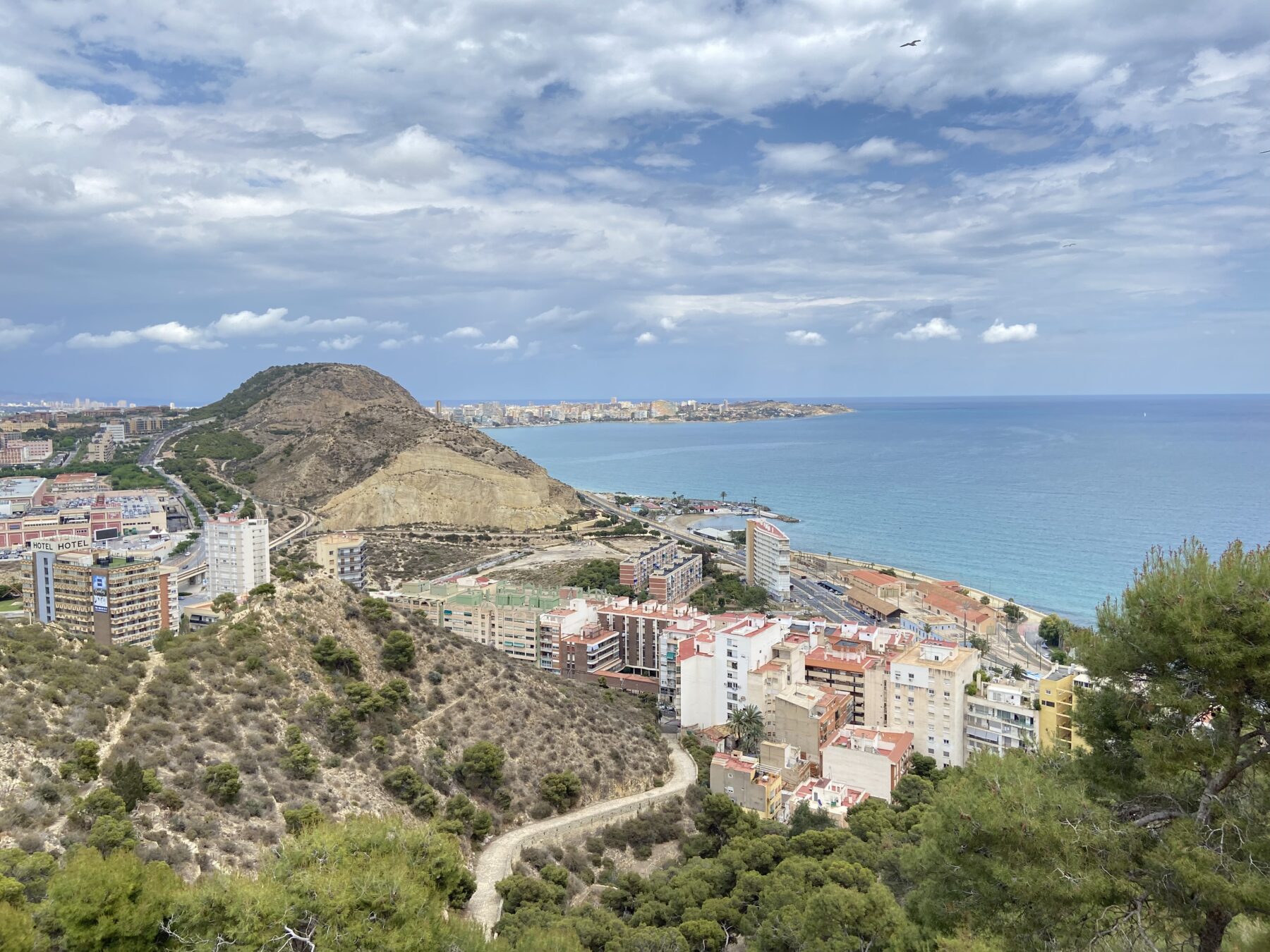
Gosh I need you as a guide around Europe and these wonderful places you have visited. You impart so much interesting information and so descriptive I feel like I am there.
Thanks again V
My dearest friend, I don’t know what to say about your kind comments. I try my best to give as much unusual information as possible when I write about my wanderings around the world. Love you very much! Skandorina
I just got back from Scotland (in real) and now you take me to a virtual tour in Alicante…thanks my friend..it alowed me to linger into my vacation mode for a bit longer 🙂
Always happy to make a journey last longer, my friend! Big hugs!